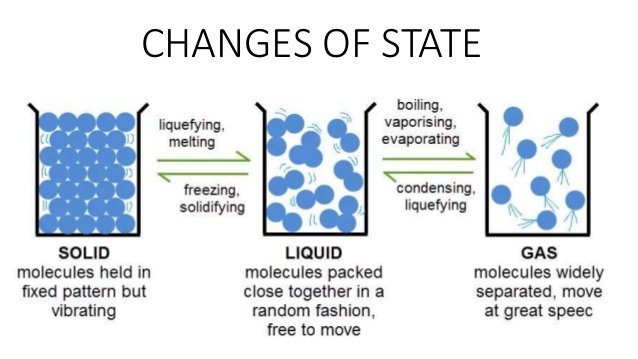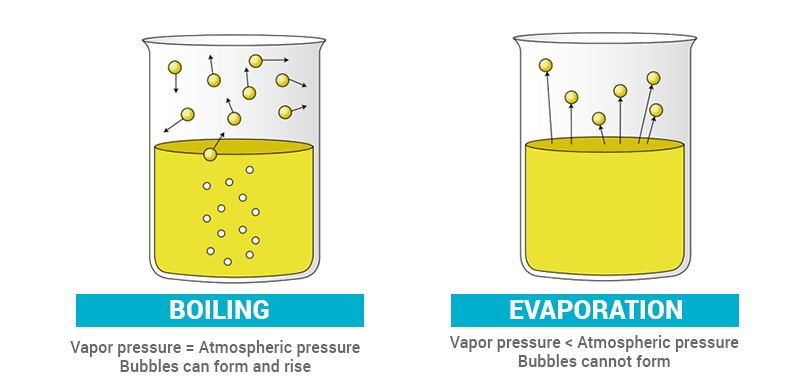Back to: BASIC SCIENCE JSS2
Welcome to Class !!
We are eager to have you join us !!
In today’s Basic Science class, We will be discussing Boiling and Evaporation. We hope you enjoy the class!

TOPIC: BOILING AND EVAPORATION
When a solid is heated, the particles vibrate more and take up just a tiny bit more room. According to the kinetic theory, the molecules of solids and liquids are in constant vibration. When heated, they vibrate faster and force each other a little farther apart; which leads to expansion. That is why solids expand, but not very much. The linear (length) expansion of solids is small and for the effect to be noticed, the solid must be long and/or the temperature change large. Liquids and gases expand more because the particles are free to move faster. In gasses, a little heat speeds them up a lot so they take up much more room. In this lesson, we are going to look into the explanation of boiling and evaporation using the kinetic theory.
COOLING BY EVAPORATION
Why does so much water evaporate from the sea? It evaporates because of heat from the sun. Water absorbs heat when it evaporates. Evaporation occurs when faster-moving molecules escape from the surface of the liquid. The average speed and therefore, the average kinetic energy of the molecules left behind decreases i.e. the temperature of the liquid falls which results in cooling.
EXPLANATION OF BOILING AND EVAPORATION USING KINETIC THEORY
Boiling occurs for a pure liquid at a definite temperature called its boiling point and is accompanied by bubbles that form within the liquid, containing the gaseous or vapour form of the particular substance. It occurs on the entire mass of the liquid.
Evaporation into a vacuum occurs much more rapidly than into a region where there is air or other molecules and it occurs on the surface.

FACTORS THAT AFFECT EVAPORATION
Evaporation occurs more rapidly when:
- the temperature is higher
- the surface area is large
- a wind is blowing over the surface carrying vapour molecules away from the surface.
For example, when you hang out your clothes to dry, what can you do to help the water evaporate quickly? There are three things you can do:
(i) You can hang clothes in a warm place. As we just saw, the temperature is one factor that affects the rate of evaporation. The higher the temperature, the faster the clothes dry.
(ii) You can spread the clothes out to expose the biggest possible area to the air. The area exposed is a factor that affects the rate of evaporation. The larger the area exposed, the faster the clothes dry.
(iii) You can hang the clothes in a place where the air is moving. The wind is the third factor that affects the rate of evaporation. The stronger the wind, the faster the clothes dry.
The example above explains practically the factors that affect evaporation.
We have come to the end of this class. We do hope you enjoyed the class?
Should you have any further question, feel free to ask in the comment section below and trust us to respond as soon as possible.
We have come to the end of this term. It has been an amazing journey and we hope you enjoyed as much as we did. We can’t wait to see you next term. We are eager for you to join us there.
